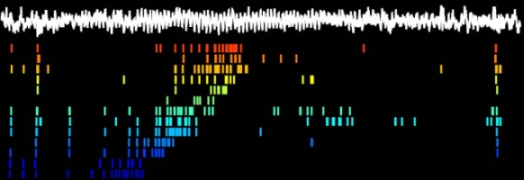My lab is primarily interested in how the brain represents, coordinates, and stores memories. Hippocampal neuronal networks generate an assortment of firing patterns that vary depending on the behavior and state of an animal, from active exploration to resting and different stages of sleep. In our lab’s extracellular recordings from large populations of spiking neurons in rodents, we observe state-dependent temporal relationships between activities at multiple timescales. Recent work in my lab is aimed at understanding what role these unique spike patterns play and what they tell us about the function and limitations of different brain states for memory in healthy and compromised animals. To answer these and related questions, we combine behavioral studies of freely moving, learning and exploring rats, multi-channel recordings of the simultaneous electrical (spiking) activity from hundreds of neurons during behavior, sleep and sleep-deprivation, statistical and machine learning tools to uncover deep structure within high-dimensional spike trains, and chemogenetics and optogenetics to manipulate protein signaling and action potentials in specific neural populations in precise time windows.

Spike times recorded from a population of hippocampal neurons during running on a maze.
What are some of your most interesting projects?
Evaluating the impact of sleep loss on hippocampal replay.
Using unsupervised machine learning to evaluate the temporal structure of hippocampal firing patterns during sleep.
What is the most significant scientific contribution you would like to make?
Understand how the hippocampus serves memory and what role sleep plays in this process.
What makes you excited about your data science and AI research?
The potential for AI models to help explain how the brain works.
